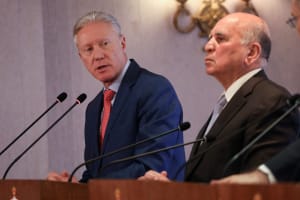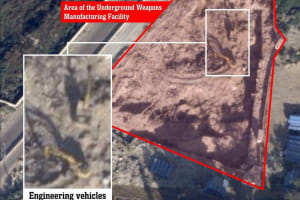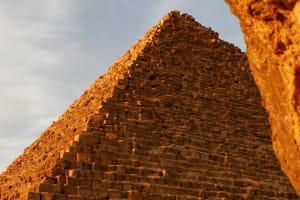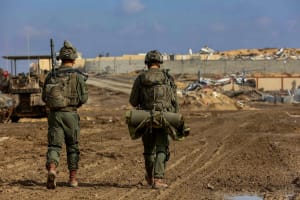Hezbollah claims withdrawal from most military positions in southern Lebanon

The Iranian-backed Lebanese terror group Hezbollah claims it has vacated the majority of its military sites in southern Lebanon and handed them over to the Lebanese army.
“Out of 265 Hezbollah military positions identified south of the Litani [River], the movement has ceded about 190 to the army,” a Hezbollah official told the AFP news outlet under condition of anonymity.
Hezbollah launched an attack on Israel on Oct. 8, 2023, the day after the Hamas terrorist organization invaded southern Israel, massacring 1,200 and kidnapping 251 Israelis and foreign nationals. Hezbollah continued attacking Israel for over a year with thousands of rockets, missiles and drones. As a result, dozens of Israeli civilians were killed, and some 70,000 Israelis were evacuated from their homes in northern Israel.
Israel responded by severely degrading Hezbollah’s military capabilities, eliminating thousands of Hezbollah terrorists and wiping out most of the terror group’s leadership, including its top leader, Sec.-Gen. Hassan Nasrallah.
A weakened Hezbollah agreed to a ceasefire, which took effect on Nov. 27, 2024. Under the terms of the agreement, Hezbollah forces are to withdraw from southern Lebanon to positions north of the Litani River, approximately 30 kilometers (19 miles) from Israel’s northern border.
In February, the Israel Defense Forces lifted some security restrictions for northern Israeli communities amid signs that Hezbollah was no longer able to launch attacks.
"The organization suffered heavy losses," a Hezbollah source told The Wall Street Journal at the time.
However, many residents of northern Israel continue to feel threatened and are calling for the complete dismantling of Hezbollah’s military capabilities. A significant number remain hesitant to return to their homes as long as the threat from Hezbollah persists across the border.
Despite its losses, Hezbollah remains a powerful military and political player in Lebanon and still considered more powerful than the conventional Lebanese Armed Forces (LAF).
During a visit to Lebanon in February, U.S. Deputy Special Envoy for the Middle East Morgan Ortagus demanded that Hezbollah be excluded from the new Lebanese government administration in Beirut.
“We have set clear red lines in the United States that [Hezbollah] won’t be able to terrorize the Lebanese people, and that includes by being a part of the government,” Ortagus said following a meeting with Lebanese President Joseph Aoun.
The new Lebanese government ultimately included Hezbollah members, despite opposition from the Trump administration.
While the IDF's fight in Gaza against Hamas has resumed, Hezbollah has largely kept a low profile in recent months. However, in March, the Israeli military launched a strong retaliatory strike on Hezbollah positions in Lebanon after six rockets were fired toward the northern Israeli town of Metula. Hezbollah denied responsibility for the rocket fire.
Lebanese Foreign Minister Youssef Rajji recently confirmed that Beirut has been informed that international financial aid is linked to the disarmament of Hezbollah.
“If Israel withdraws, Hezbollah will lose its justification for maintaining arms,” Rajji said.
Hezbollah is ideologically opposed to the existence of a Jewish state and has used disputed border territories as an excuse to justify attacks on Israel.
In February, the IDF withdrew from most of its positions in southern Lebanon in accordance with the ceasefire agreement. However, it continues to hold five strategic locations to ensure the security of nearby Israeli border communities.

The All Israel News Staff is a team of journalists in Israel.
You might also like to read this:

















